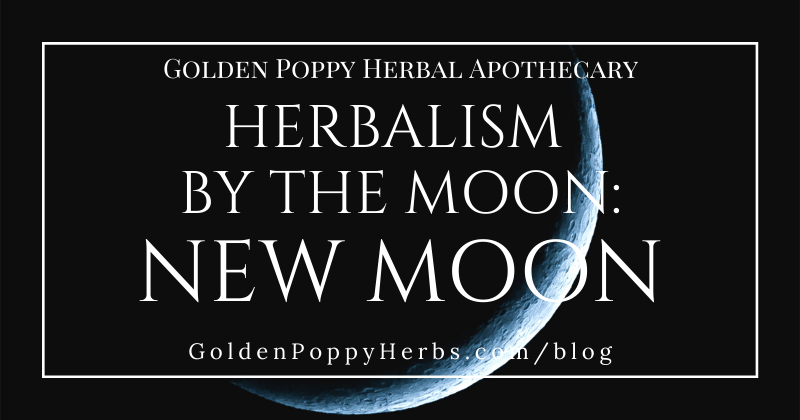
We as humans have long been fascinated with and connected to the moon.
Even if you are not someone who identifies as a night owl, we can bet that you have had an experience where the Moon has brought you a sense of comfort or coziness on a quiet evening. What is beautiful about the Moon is that it is something all of us, no matter where you are on this globe can see, experience, and witness. The Moon has been around long before the evolution of humans, and with that, it has been a constant companion to us and this planet we inhabit.
Perhaps what draws us to the Moon, is that familiarity. The fact that it feels like one of our oldest friends, and we take comfort in knowing that even when we cannot see it, that it still is there in the sky at all times. It is easier to not feel alone, knowing that the Moon has been, and will forever, continue to be around.
There is something enchanting about the energy of the Moon. The silvery shimmer in which it illuminates the night sky has a way of reaching even the deepest parts of our soul. One might even say it feels like a consistent sense of hope – shining brightly despite the darkness. But, at the same time, the Moon also reminds us of the strength that comes with consistent change. While we may evolve and shift, at our core, we are always still who we are meant to be. The Moon serves as one of our oldest teachers, routinely demonstrating this concept each month.
The moon is a reminder that no matter what phase I am in, I am still whole. ~Author Unknown
The History of the Moon
While the Moon is incredibly ancient, it is not something that has been around since the beginning of time.
There are a couple of theories that scientists have considered as possible origin stories of the silver orb of the night sky.
One of the more recent theories was published in August 2017, is that of the theory that two moons collided to form a singular moon. The speculation behind this theory is due to the fact that the near side of the Moon has a much different face than that of the far side of the Moon. The near side of the Moon is low-lying and flat, compared to the high and mountainous far side. It is thought that perhaps a smaller, second moon also orbited the earth at one time before slamming into the sibling moon, resulting in the vastly different surfaces.
A more widely known theory is the entrapment theory. In this theory, it is thought that the Moon likely formed in another part of our solar system, and the stars aligned (you didn’t think we wouldn’t start 2021 without some sort of pun did you? ;)) in order to create a perfect situation that would allow for the Moon to be captured by Earth’s gravitational pull. The Moon was then brought into orbit around the Earth as a result.
The “Giant Impact Hypothesis” is also another interesting possible explanation for the origin of our Moon. In this hypothesis, it is thought that perhaps the Earth collided with another planet that originally existed in our solar system half of its size around 4.5 billion years ago. This collision may have resulted in debris being thrust into space, some of which may have been pulled into the Earth’s orbit. It is thought that a ball of partly molten rock may have been the beginning shape of the moon, later forming into the solid material it is today.
Other theories and potential explanations for the formation of the Moon include the possibility that a large chunk of material spun off of Earth as it was spinning rapidly during the early formation of the solar system, later becoming the Moon, as well as the “Co-accretion hypothesis” in which it is thought that the Moon and the Earth were created at the same time from a single cloud of material that originally formed the solar system itself.
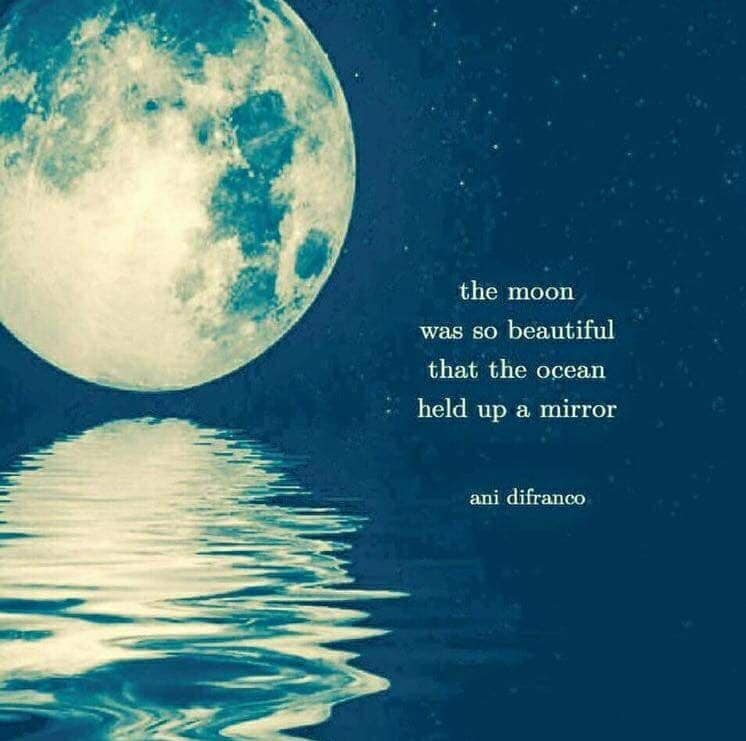
The Phases of the Moon
If you’ve ever wondered why the moon seems to change size and shape in the night sky, appearing as a whole orb at one time and completely dark another, then let us help illuminate you.
Unlike the Sun, the moon does not produce its own light. In fact, the light that seems to come from the moon is a reflection of the sun’s light, and as the moon revolves around the Earth, the amount of light that is reflected towards us from its surface changes depending on its position relative to the sun.
This change in position and reflection is what creates the appearance of the moon’s phases.
🌑 New/Dark Moon is when we cannot see the moon because no light is being reflected back to us.
🌒 🌓 🌔 Waxing Moon is when the moon is appearing larger and larger in the sky each night, moving from a thin crescent opening to the left, all the way to the Full moon.
🌕 Full Moon is when the entire face of the moon is reflecting light towards the earth, allowing us to see it’s fully round shape. This is only one night of the cycle, but often the moon looks very full for 2-3 days,
🌖 🌗 🌘 Waning Moon is when the moon begins to look smaller and smaller each night as it travels away from fullness towards the dark moon. The crescent shape will be open towards the right during this phase.
In addition to the appearance of the moon’s changes in the sky, many phenomena have been noted alongside the changing of the phases, including its effects on the tide, migration habits of birds, pet behavior, and more.
It’s no small matter (another pun, so sorry), and it has a profound impact on our planet and our lives. Those who bleed on a regular basis, un-interfered with by hormonal birth control, may find that they bleed in conjunction with a certain phase of the moon. The moon’s cycle lasts between 27-29 days, with the average menstrual cycle being 28 days in length, it’s entirely possible that a person could always bleed during the new moon or always bleed during the full moon.
Think about the profound effect the moon has on bodies of water, and the fact that humans are 98% water, and it’s not that hard to imagine it could be having an effect on us as well.
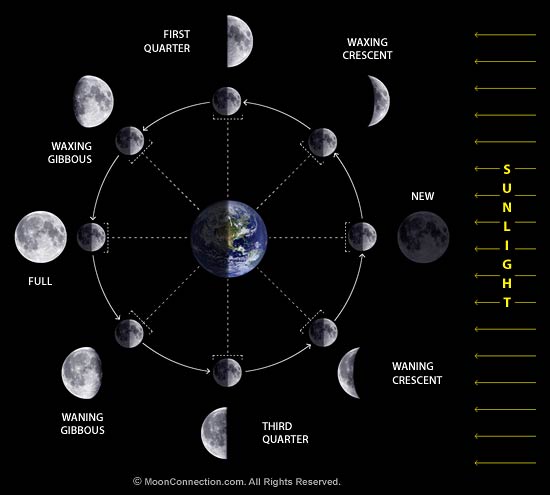
Herbalism by the Moon
In this blog series, we will explore ways in which to connect your herbal practice to the rhythms of the moon cycle. Each post will be dedicated to one of the 4 main phases of the Moon: New, Waxing, Full, and Waning, and will explore other related topics including how the moon impacts our mood and health, the history of human interaction with the Moon, folklore of the Moon, and more!
In serendipitous fashion, in the same time span in which this post will be released, the next closest moon phase will be the New Moon. This is the phase in which we temporarily say goodbye to the physical sight of the Moon in the sky.
The New Moon
The New Moon (also called the Dark Moon) can be thought of as the beginning of the journey. As the Moon retreats into the darkness of the night, we can take this as a reminder of the importance to regularly turn inward ourselves. This time also tends to reflect a period in which there is a sense of a “clean slate,” where we can take time to assess what it is we want to create in our lives, or perhaps what we want our future to look like.
There are many holistic practices, or perhaps even personal rituals, we can engage in to help us connect further with the various phases of the Moon.
The energy of the New Moon is the perfect time for reflecting in, for sitting in the quiet and dark moments, to perhaps see that which cannot be seen in the light.
It is the perfect time to create and set intentions for what you may be seeking to manifest, create, or change in your life.
On the next new moon, try some of the following to align with this energy:
Intention Setting – This is a very simple practice one can engage in to connect with New Moon Energy. This involves setting intentions for what you want to manifest or change in your life. Think of this as setting a goal that you would like to continue to build on for the remaining duration of the moon cycle. If you are someone who enjoys meditation practice, this can be something to focus on. If meditation is not in your practice, you can write down what your goals or intentions are for this moon cycle. As the Moon shifts, you can return to this intention regularly.
Release Ritual – While the New Moon is about new beginnings and fresh starts, sometimes we have to let go in order to start over or to move forward. A practice that may be of benefit to you at this time is writing down 2 or 3 things that you do not wish to carry with you into the next moon cycle. Sit with these, allowing yourself the time to grieve if needed, or to visualize what your life may look like without carrying these forward. It may help solidify this intention for you to (safely) burn the paper on which these are written or bury them in the ground.
Get Organized – Similar to the previous release ritual we mentioned, a great way to get our journey started and capitalize on New Moon energy is to tidy up our environment. If our home, office space, or place in which we create is in disarray or cluttered, this may create energetic barriers for us to perform at our best. We encourage you to put on some good tunes or a good podcast and get to cleaning up. Additionally, part of getting organized can be resourcing the tools you may need to further encourage your journey – that might be signing up for a class, downloading a new book, or picking up some supplies. Take some time to set yourself up for success.
Plant Seeds – Like the New Moon, a plant too starts in darkness as it sprouts from beneath the earth. Planting seeds of your own, whether literal or symbolically, is an excellent practice to connect with the New Moon.
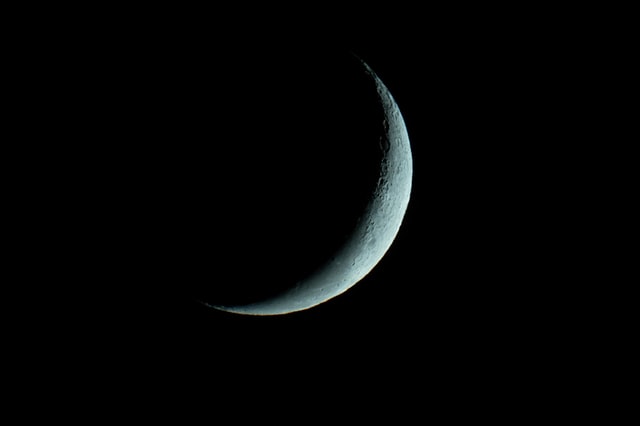
New Moon Herbalism
In her book, The Green Witch: Your Complete Guide to the Natural Magic of Herbs, Flowers, Essential Oils and More, author Arin Murphy-Hiscock points out why the deep connection between plants and the moon makes sense. It is fairly common scientific knowledge that the Moon has an influence on the tides of the sea due to the gravitational pull of the Moon. It is this gravitational force that is constantly in effect between the Earth and the Moon that results in the rising and falling rhythms of the ocean.
As pointed out by Murphy-Hiscock, “plants are composed of a large amount of water, which implies that their life cycle would be affected by the Moon’s phases.”
Connecting to the energy of the Moon is yet another opportunity to call upon our herbal allies, deepening our relationship with both this energy and our relationship with plants in general. A great first step in doing this is to develop a better understanding of the energetics of the New Moon.
We should seek herbs that support us in taking the much-needed pause that the new moon offers, herbs that are calming, relaxing, nourishing, and supportive. In order for us to perform our best as we move toward our goals, it is important that we properly nourish and care for our bodies. It is the development of this inner support we create for ourselves that will carry us forward.
We can also choose herbs that are warming, alleviating any cold or stagnation in our system that may be felt or increased with the darkness of the outer world.
Alex J. Cunningfolk, herbalist and author behind the Worts & Cunning Apothecary blog recommends some of the following herbs to promote the energetics of the New Moon:
Milky Oats & Oat Straw – Oats are a nutritive tonic herb (meaning they provide nutritional support to our bodies), with deeply moistening properties. They work most specifically on the nervous system and are considered to be tropho-restorative (tissue restoring) to the nervous system, making this a particularly powerful ally for helping to soothe frayed and over-stimulated nerves, which is what most of us need when we seek to retreat into ourselves. Milky Oats can be found in our Self-Love Potion. Read more about oat here and here
Ginger – In addition to being an herb that helps support our immune system and digestion, Ginger is an herb that can help promote action. This herb encourages the movement of blood and lifeforce throughout our system, is warming, and alleviates stagnant energy in our bodies and our minds. If we are seeking to help ‘digest’ the previous moon cycle, or anything else we want to work through during out retreat, then ginger can aid in that. Read more about ginger here.
More herbs we recommend to connect to New Moon Energy include:
Reishi – This lovely mushroom is often referred to as the “Mushroom of Life.” It is an incredibly nutritious fungus, and is a powerful adaptogen, meaning it helps us to adapt to the internal and external stressors of our environment. It is also considered to be a calming adaptogen, helping to nourish the deepest parts of ourselves. Sprinkling a little reishi powder in your morning coffee during the period of a New Moon may be just the oomph you need to help in strengthening your inner reserves. Read more about Reishi here.
Nettle – Much like Reishi, Nettle is an incredibly nourishing herb. Packed with essential vitamins including A, C, E, and K, riboflavin, thiamine, and minerals including calcium, chromium, magnesium, manganese, phosphorus, potassium, silica, iron, and zinc. Nettle truly supports all systems of the body. Read more about nettle here.
Marshmallow – (not the fluffy white sugar puffs in your hot cocoa) the roots of this plant are intensely moistening, bringing much-needed hydration to the cells of the body for those who are prone to dryness. Their affiliation to water in the body places them squarely under the domain of the moon and makes it a perfect ally to add in during this moon phase, especially as a counterbalance to the dryness that can sometimes come with drinking nettles. Read more about marshmallow here
Ashwagandha – If you plan to give your nervous system a rest during this phase, ashwagandha can aid in that goal. Also an adaptogen, this plant can help rebalance your cortisol rhythms and levels when used over a long period of time and is the perfect remedy for our modern, hectic, over-worked bodies. Read more about ashwagandha here.
Mugwort – the herb of Dreamtime, this plant has long been associated with the darker side, but only in-so-much as it tends to work best at night when our waking mind is at rest and our unconscious mind is at play. Mugwort is said to enhance one’s dreams and is perfect for working with when you are seeking to look deeper into yourself. Read more about mugwort here.
Additionally, any herb that falls into the relaxing/calming category would be an excellent ally for helping yourself retreat and restore, just as the moon does when she hides her face from the world.
We hope that this post inspires you to begin to look at the moon with more regularity and to reflect upon how your life ebbs and flows in cycles, perhaps in conjunction with those of the moon, and how you can tap into this rhythm to bring more intention and connection into your life.
We are excited to share in this journey with and deepen into the energy of the Moon along with you, and with the warmest wishes, hope your 2021 is off to a great start!

Sources & Resources:
- Cunningfolk, Alexis J. “Herbs of the New Moon.” Worts & Cunning Apothecary. 29 September 2016. http://www.wortsandcunning.com/blog/herbs-of-the-new-moon
- Erickson, Kristen. “What are the Moon’s Phases.” NASA Space Place. 12 August 2020. https://spaceplace.nasa.gov/moon-phases/en/
- History.com. “Where Does the Moon Come From?” History.com. 22 August 2018. https://www.history.com/news/where-does-the-moon-come-from
- Magic of I Astrology Planner. https://shop.goldenpoppyherbs.com/astriological-planner-black-magic-of-i.html
- Murphy-Hiscock, Arin. (2017). The Green Witch: Your Complete Guide to The Natural Magic of Herbs, Flowers, Essential Oils, and More. Avon, MA: Simon & Schuster, Inc.
- Pearce, Lucy H. Moon Time. https://shop.goldenpoppyherbs.com/moon-time-lucy-h-pearce.html
- Pearce, Lucy H. Reaching for the Moon. https://shop.goldenpoppyherbs.com/reaching-for-the-moon-lucy-h-pearce.html
- Zarrella, Nikki. “7 Self-Care Rituals to Practice During the New Moon.” Thought Catalog. 25 March 2020. https://thoughtcatalog.com/nikki-zarrella/2020/03/7-self-care-rituals-to-practice-during-the-new-moon/
Browse by category
- Aromatherapy
- Astrology & Magic
- Ayurdeva
- Botany Foraging & Gardening
- Chakras
- Digestion
- Earth Connection
- Energetics
- Flower & Gem Essences
- Folk Traditions
- Herbalism & Holistic Health
- Immune Support
- Materia Medica
- Mushrooms
- Nutrition
- Seasonal Living: Autumn
- Seasonal Living: Moon
- Seasonal Living: Spring
- Seasonal Living: Summer
- Seasonal Living: Winter
- Skin & Body Care
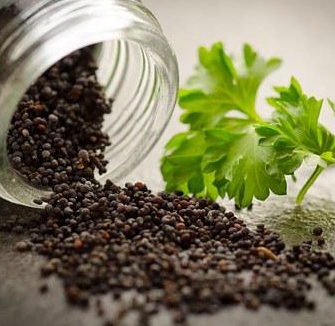
Don’t Miss a Thing!
Enter your email below to be the first to know about sales, new products and tips for taking care of your pieces.

